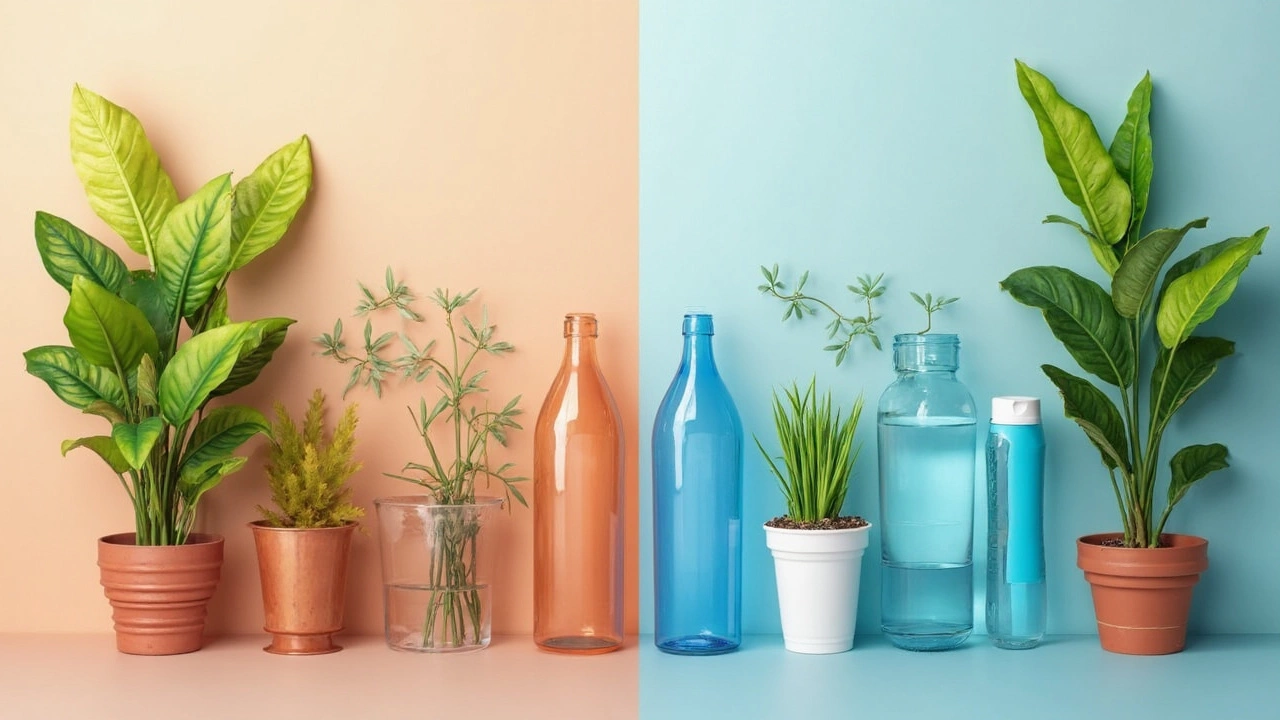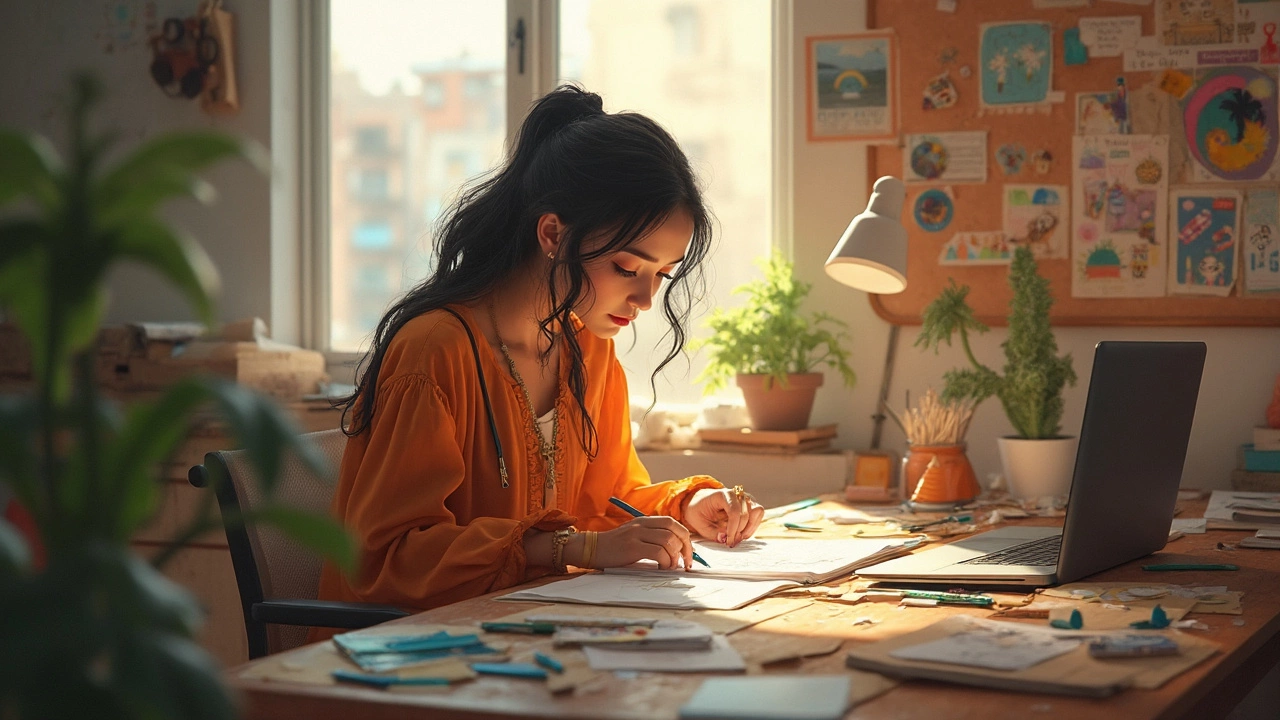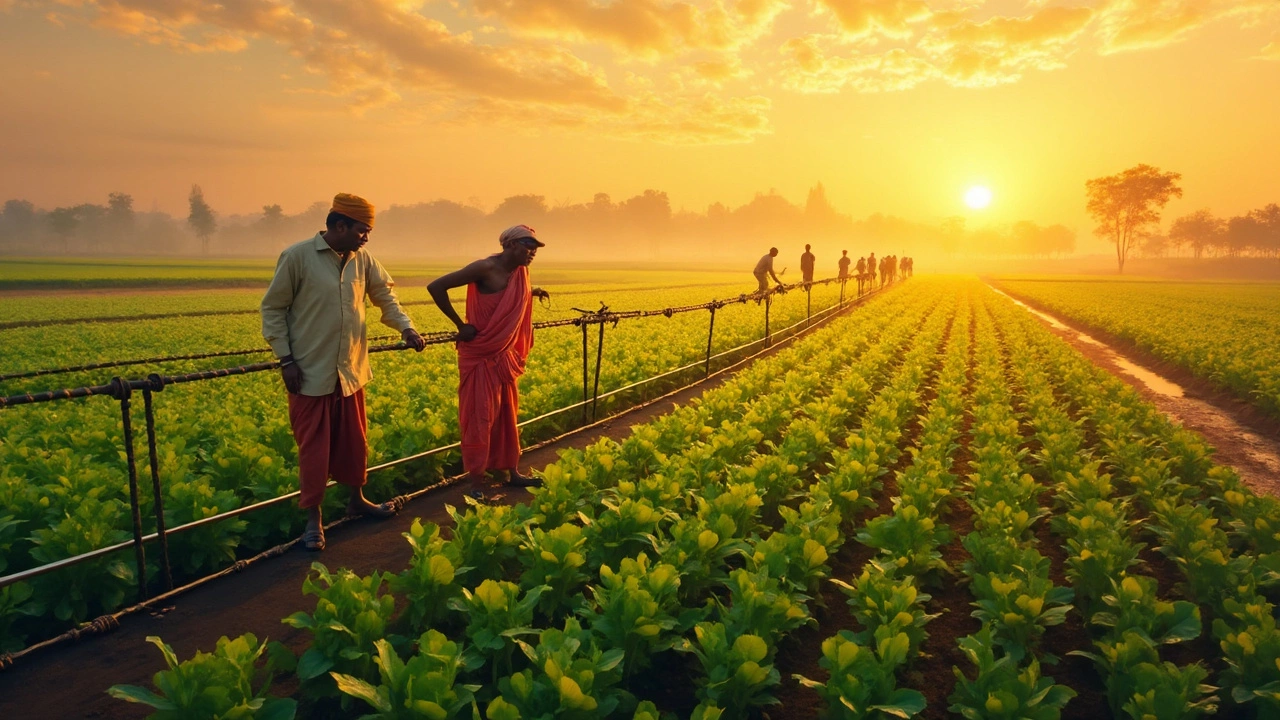Is Tap Water OK for Plants? Know What You're Pouring

You want your indoor jungle to actually look happy, right? You feed them sunlight, maybe a little fertilizer now and then, but what about the water you use? Plenty of folks grab their watering can, fill it straight from the kitchen tap, and call it a day. But is tap water really safe for your leafy roommates?
Here's where things get interesting. Tap water often carries extras like chlorine, chloramine, and minerals your plants never asked for. While these ingredients make water safer for us to drink, they can sometimes cause problems for more sensitive indoor plants. Think brown leaf tips or stunted growth—never a good look.
Not all tap water is the same, either. What’s coming out of your faucet could vary a lot depending on where you live. Some places have ‘hard’ water loaded with calcium and magnesium; others serve up ‘soft’ water that’s treated with extra stuff your plants might not love. That's why understanding what's in your tap water is the real first step.
- What’s in Tap Water?
- How Tap Water Affects Houseplants
- Chlorine and Chloramine: Should You Worry?
- Hard Water vs. Soft Water
- Tips to Make Tap Water Friendlier
- Simple Fixes for Common Problems
What’s in Tap Water?
Most people don’t think twice about what’s really swirling around in their glass of tap water, but when it comes to your plants, that mix actually matters. Every time you turn on the tap, the water brings along a little cocktail of chemicals and minerals. Some help keep your water safe. But some can mess with your plant’s groove.
Here’s what you’ll usually find in tap water:
- Chlorine: This is the big one. Cities add chlorine to kill harmful bacteria, making water safe for us but sometimes irritating for certain houseplants. It can dry out leaves or even kill sensitive roots over time.
- Chloramine: Kind of like chlorine’s cousin, this chemical sticks around longer in water and is harder to get rid of. It’s used for the same reason—safety from germs—but it can also stress some plants, especially if you collect rainwater or use it for hydroponics.
- Fluoride: Added to help people’s teeth, but some indoor plants, like spider plants and peace lilies, get brown tips from too much fluoride.
- Dissolved minerals: Tap water almost always carries minerals like calcium, magnesium, and sometimes sodium. 'Hard' water just means it has more of these minerals. Over time, too much can build up in your plant’s soil, leading to crusty white patches or sad-looking leaves.
- Other extras: Most water will also have traces of things like iron, copper, and sometimes tiny pieces of old plumbing (ever seen weird water stains in the sink?). These usually won’t hurt plants in small amounts but might add up over a long period.
So yeah, the water out of your tap isn’t pure H2O. Knowing what’s in there can save your plants a lot of grief—and save you from wondering why those leaves keep browning even when you’re doing everything else right.
How Tap Water Affects Houseplants
Most people don't realize that what goes into your cup isn't always the best thing for your plants. The main things to watch for in tap water are chlorine (or chloramine), fluoride, and the level of dissolved minerals. These extras aren't an issue for all houseplants, but some are pretty sensitive and will show you how they feel by getting crispy leaf edges or patchy leaves.
Chlorine is added to water to kill germs, but some houseplants, like spider plants and peace lilies, really hate it. Chloramine is similar, but it hangs around even longer and is tougher to get rid of just by letting your water sit overnight. Then there’s fluoride, which is known to cause brown tipping on dracaena or spider plants. If you’re noticing those brown edges, your tap water could totally be the culprit.
Minerals like calcium and magnesium aren’t automatically bad, but too much can cause white crusty stuff on soil or pots. Over time, minerals build up and mess with the roots, keeping plants from soaking up water and nutrients. The classic sign your water is too ‘hard’? A white ring appears where your pot sits, or on top of the soil.
| Substance | Common Effect on Plants | Typical Indoor Plant Symptoms |
|---|---|---|
| Chlorine/Chloramine | Can burn roots and leaves | Brown or yellow leaf tips |
| Fluoride | Builds up, causes toxicity in some plants | Browning/patchy leaves |
| High Minerals (Hard Water) | Salt buildup, slows growth | White crust, stunted plants |
For a lot of tough indoor plants, regular tap water is totally fine. Pothos, snake plants, and philodendrons are chill. But if you have fussy types like calathea, dracaena, or spider plants, you might want to pay more attention to what’s in your water. Want a simple test? If your glass or kettle collects white spots or limescale, you’ve got hard water and your sensitive plants might not thank you for it.
Bottom line: Your tap water could be just fine, or it could be quietly stressing your plants out, depending on what’s in it. Keeping tabs on leaf changes and checking for residue goes a long way.
Chlorine and Chloramine: Should You Worry?
If you’ve ever been hit with that slight pool smell after pouring water from your tap, you’re catching a whiff of chlorine. Cities add chlorine or chloramine to tap water to make it safe to drink. Seems like a good thing for humans, but do indoor plants feel the same way?
Here's the deal: chlorine can stress your plants, especially if they’re more sensitive types like ferns, calatheas, or certain palms. You might see brown edges or weak new growth. Chloramine’s a bit trickier. It's a mix of chlorine and ammonia—stays in the water longer than plain chlorine, so it doesn’t just disappear overnight.
“Most houseplants can shrug off tap water with low chlorine levels, but some finicky species will absolutely show when they’re unhappy.” — The Spruce, Houseplant Care Tips
The U.S. Environmental Protection Agency allows municipal water to have up to 4 mg/L (milligrams per liter) of chlorine or chloramine. Your tap likely lands somewhere below that. Here’s a quick stat roundup for common cities:
| City | Average Chlorine Level (mg/L) |
|---|---|
| New York | 0.8 |
| Chicago | 0.5 |
| Los Angeles | 1.0 |
| Houston | 2.2 |
If your plants look cranky, tap water might be the culprit. Some folks let water sit out for 24 hours to let chlorine evaporate, but—here’s the catch—this doesn’t work with chloramine. It sticks around unless you use an aquarium water conditioner or filtered water.
- If your area uses only chlorine: Let your water sit uncovered overnight before using it on plants.
- If your area uses chloramine: Use a basic aquarium water conditioner (a few drops per gallon does the trick) or switch to filtered water if you notice plant problems.
If you’re wondering, yes—most everyday indoor plants will survive with regular tap water, but if you want your plant babies to actually thrive, take an extra minute to check what’s in your glass. The fussier the plant, the more it matters.

Hard Water vs. Soft Water
So, what's the big deal between hard water and soft water when it comes to plants? Well, hard water is full of minerals like calcium and magnesium. It leaves white crusty spots on your plant pots and, over time, can mess with soil health. A U.S. Geological Survey chart shows that about 85% of water in America is considered hard to some degree, so odds are good your tap water fits the bill.
Here's a quick breakdown of how hard and soft water stack up for indoor plant care:
| Type | Main Features | Concerns for Plants |
|---|---|---|
| Hard Water | High in calcium & magnesium | Mineral buildup, blocked root uptake, white residues |
| Soft Water | Often contains added sodium | Soil salt buildup, root stress, leaf browning |
With tap water, if you spot white crusts on the soil or pots, that’s usually calcium from hard water. Over time, these minerals can block your plants’ roots from absorbing nutrients. You might notice your plants start to struggle even if everything else seems perfect. Dracaenas, spider plants, and calatheas are especially finicky about this kind of buildup.
Soft water’s not a free pass either. Home water softeners swap those minerals for sodium, and too much salt is rough on most indoor plants. It stacks up in the soil and messes with root health, sometimes faster than you’d think.
If you’re curious about your water, a basic test strip kit from a home store can clue you in about your tap’s mineral content. If hard water is your only option, flush your plant’s soil with distilled water every month or so to wash away the extras. And if you use a softener, maybe grab water from a faucet that’s not connected to the system for your plants. It’s a small hassle but saves your leafy friends a ton of stress.
Tips to Make Tap Water Friendlier
Worried about what's floating around in your tap water before you pour it on your beloved indoor plants? You’re not alone. There are simple ways to make that everyday tap water work better and safer for your green crew.
Let’s get right into some practical moves you can make to improve your tap water for plant watering:
- Let water sit overnight: Fill up a bucket or watering can, then just let it sit out for at least 24 hours. This helps chlorine—a main plant stressor—evaporate out. It won’t do much for chloramine, but for a lot of city tap water, it’s a good first step.
- Use a cheap water filter: Simple pitcher filters can remove some chlorine, a bit of chloramine, and heavy metals like lead or copper. It can’t work miracles, but filtered water already gives your plants a gentler drink. Whole-house filters are even better, but you don’t need to break the bank to see a benefit.
- Collect rainwater if possible: No fancy gear needed—buckets outside when it rains give you free, mineral-soft water almost all indoor plants love. Just avoid collecting from dirty or metal roofs, since that can add stuff you don’t want to the mix.
- Boil hard water and let it cool: This won’t fix everything, but boiling can help settle out some minerals in super hard tap water zones. Let the boiled water cool to room temperature before using it on your plants.
- Use distilled water for picky plants: Some houseplants like calatheas, spider plants, or orchids hate tap water with a passion. Distilled water has zero minerals or additives, but remember, plants will need feeding since all the nutrients are now missing from the water.
Wondering how your city’s tap water compares to others? Here’s what average chlorine levels look like across a few U.S. cities:
| City | Avg. Chlorine Level (mg/L) |
|---|---|
| New York, NY | 0.5 |
| Los Angeles, CA | 1.0 |
| Chicago, IL | 0.8 |
| Dallas, TX | 2.5 |
These numbers can vary a lot, but you get the idea—not all tap water is created equal. If you see brown tips or weird splotches on leaves, it might just be the water. Try one of these fixes and see if your plants perk up.
Simple Fixes for Common Problems
Seen crusty white stuff on your soil or brown tips on plant leaves? Don’t panic—most issues from tap water are easy to solve. Here are simple moves that actually work for real problems everyone runs into:
- Browning Leaf Tips: This usually happens when there’s too much chlorine, fluoride, or salt building up in the soil. Try letting tap water sit out overnight—chlorine evaporates out pretty fast. For fluoride, you’ll need to water less often and use rainwater or distilled water when you can.
- Mineral Buildup: That crusty stuff on the soil is mostly calcium and magnesium from hard water. Every few months, flush the soil by watering until it drains out the bottom. Do this twice in a row to wash out minerals.
- Sudden Yellowing: Sometimes high levels of chloramine can stress out your plants. Unlike chlorine, chloramine doesn’t just evaporate. You can neutralize it with a pinch of vitamin C powder (about 100mg per gallon does the trick).
- Soft Water Woes: Softened tap water often contains salt, which most houseplants hate. Avoid using soft water altogether—if that’s all you have, mix it half-and-half with rainwater or distilled water.
Here’s a quick reference guide to the most common tap water issues and easy solutions:
| Problem | What You See | Quick Fix |
|---|---|---|
| Chlorine | Brown tips, stunted growth | Let water sit overnight |
| Chloramine | Sudden yellowing, droopy leaves | Add a pinch of vitamin C powder |
| Hard Water (Minerals) | White crust on soil or pots | Flush soil with plain water, use distilled if possible |
| Softened Water | Leaf burn, odd splotches | Switch to bottled, rain, or distilled water |
If you’re really into gadgets or have a lot of plants, you can pick up a water filter pitcher—the kind you already use for drinking is usually fine for most leafy houseplants. Or just stick to the basics like letting water sit out and occasionally rinsing out your pots. A little effort keeps those plants looking good without any drama.





